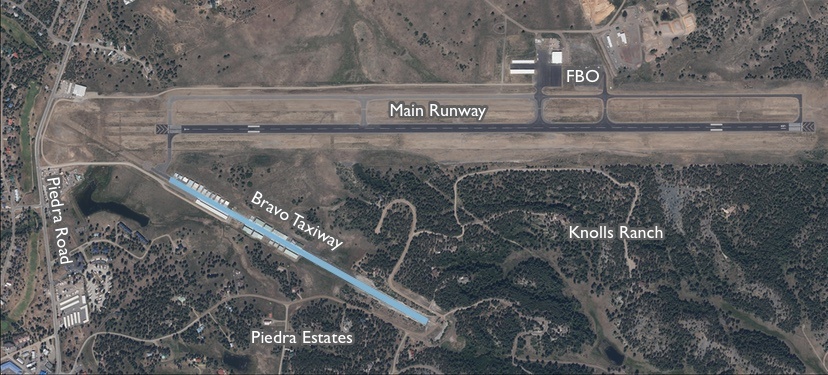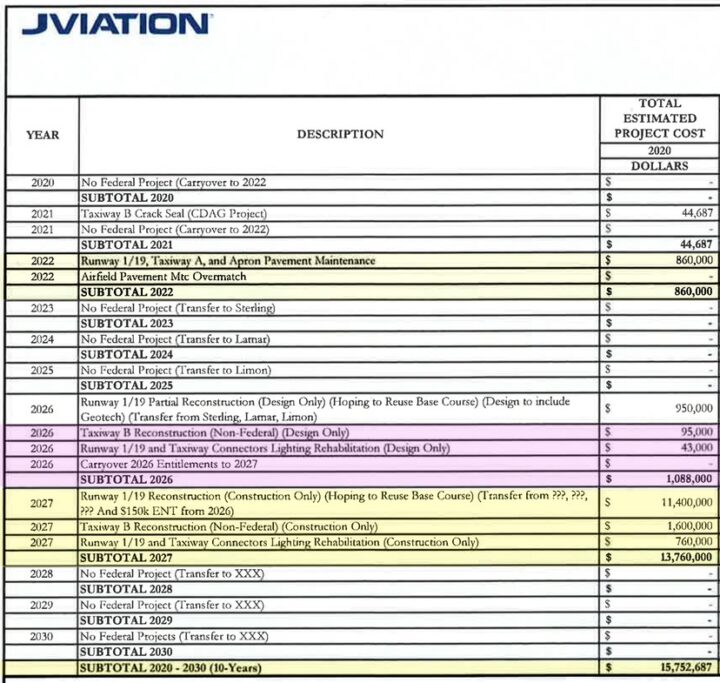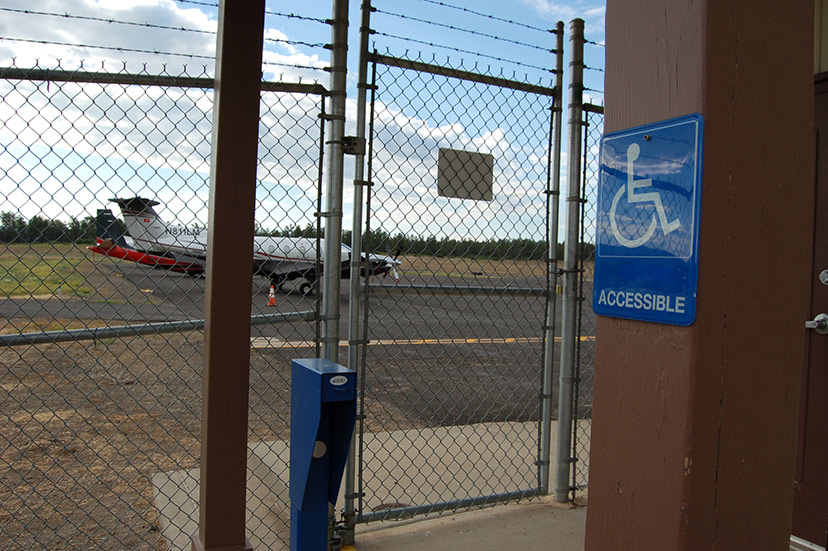The new pickleball courts at Yamaguchi Park, near the Pagosa Springs High School, have been active this summer, with participants of various ages, although I’m guessing the average age of the participants is over 60 years old.
That is to say, people of retirement age, who need some fun activity in their lives.
The new courts were financed collaboratively by the Town of Pagosa Springs, the Tourism Board, the Archuleta Board of County Commissioners, and the Pagosa Pickleball Club.
The Club, which boasts about 350 members, spent five years doing fundraising projects to raise $100,000 to help pay for the construction of the new outdoor courts.

I’m mentioning this — in an article about the Stevens Field, the airport operated by the Archuleta County government — because “special interest groups” are sometimes expected to pay for the services they receive from government. Other times, the community’s taxpayers pay for the services provided to certain “special interest groups”.
Archuleta County taxpayers pay for the operation of our public schools through property taxes, for example, with additional subsidies coming from the State of Colorado — even though most of our local households do not include children.
It’s not always easy to tell who’s paying for what, however. Sometimes, you have to dig to find the information.
The agenda for the Archuleta Board of County Commissioners Tuesday work session was posted late Friday. Here are the topics to be discussed:
- CSU Extension Department Semi-Annual Update – Robin Young
- Discussion Re Potential Water Line Work For Hangar Expansion – Chris Torres
- Discussion Re Opting Out Of Gun Free Zones – Ronnie Maez
- Initiatives 50 And 108 – Veronica Medina
- Admin Report
- Other Items Of Mutual Interest
Item Number 2 relates to Stevens Field and possible tax-funded expenditures that might benefit private owners of airplane hangers.
As mentioned in Part One, the County has been offering ‘ground leases’ to airplane owners, to allow them to build hangers on public property… and many of those leases are adjacent to the old ‘Bravo” runway. In the image below, the ‘Bravo’ taxiway is marked in light blue. The light-colored rectangles are the existing hangers.

Two residential subdivisions are adjacent to the Bravo taxiway: Piedra Estates, and The Knolls. Suzanne Dimeff is one of the property owners belonging to the Knolls Property Owners Association (KPOA), and she contacted me last week to express her concerns about several ongoing controversies.
She had written a letter to Commissioner Veronica Medina, whose district includes the Knolls and the Stevens Field airport.
One controversy concerns airplane hangers being constructed without approval by the Pagosa Fire Protection District. The Fire District is concerned that the water pressure along Bravo taxiway is insufficient to facilitate fire fighting by our partly-volunteer firefighters — especially, perhaps, in a situation where the building contains an airplane loaded with jet fuel.
That controversy might be discussed at tomorrow’s BOCC work session. We might also learn why these new hangers received temporary Certificates of Occupancy in spite of the Fire District concerns.
Another controversy involves hanger owners connecting to the Knolls’ privately-owned sewer system without permission.
Another controversy concerns the Airport Layout Plan, which might have been approved by the BOCC in 2021? But perhaps without holding a proper public hearing as required by the Federal Aviation Administration (FAA)?
Yet another controversy involves hangers being constructed along Bravo taxiway beyond the limit promised by the County in previous airport expansion plans.
And perhaps the biggest controversy of all: who should be paying for a potential $60 million in planned airport maintenance and improvements?
Here’s a short excerpt from Ms. Dimeff’s letter to Commissioner Medina:
Dear Commissioner Medina:
Stevens Airport, KPSO, and the old airport, now Bravo taxiway are within your district. This communication is to put the Board of County Commissioners (BoCC), County Attorney, and other
interested parties on notice of potential catastrophic liability exposure to the County.
Potential for Catastrophic Risk to County
The purpose of this communication is to make the BoCC and others aware that a jet fueled turbo prop aircraft is continuously using a hangar for which firefighting capability is known to be lacking. The hangar lacks a Certificate of Occupancy, and lacks liability insurance coverage.
Specifically, Hangar 511 H,’ a duplex on the North end of E Condor has been occupied since early May 2024 by 1979 Commander N84G. The Airport Manager is aware or is required to
be aware. The lessee has an insurance quote, but no binding liability policy, as is required by the ground lease. Even if coverage were promptly purchased, a claim would be denied due to the well- known fact that the hangar lacks firefighting protection yet is being used by a commercial enterprise (Pagosa Air Charters LLC) without issuance of a Certificate of Occupancy.
For less than $2000 a year in ground lease income, the County is exposed to catastrophic risk.
I’ve reached out to our three commissioners, hoping to have a chance to discuss these controversies prior to tomorrow’s work session.
In the meantime, here’s a detail from a proposed Capital Improvement Plan which may — or may not — have been approved by the Archuleta County Airport Advisory Committee, a volunteer committee charged with advising the BOCC on airport matters. According to the County website, this committee held its most recent meeting in November 2023.
As you will note, the County spent close to $1 million on airport maintenance in 2022 (shown in yellow). Another $1 million expenditure is planned for 2026 (shown in pink), and a $13,7 million reconstruction is planned for 2027 (shown in yellow). Much of the funding is expected to come from federal and state grants.

You can download the full CIP spreadsheet here with some maps of the planned expenditures. The full spreadsheet mentions $46.8 million in possible future expansion projects — in addition to the $15.8 million to be spent by 2030. So a total of about $60 million.
I began today’s installment with a question. Who should pay for government services that benefit primarily a small “special interest group”?
Perhaps the BOCC will share their feelings on that topic at tomorrow’s work session, at 8:30am.

